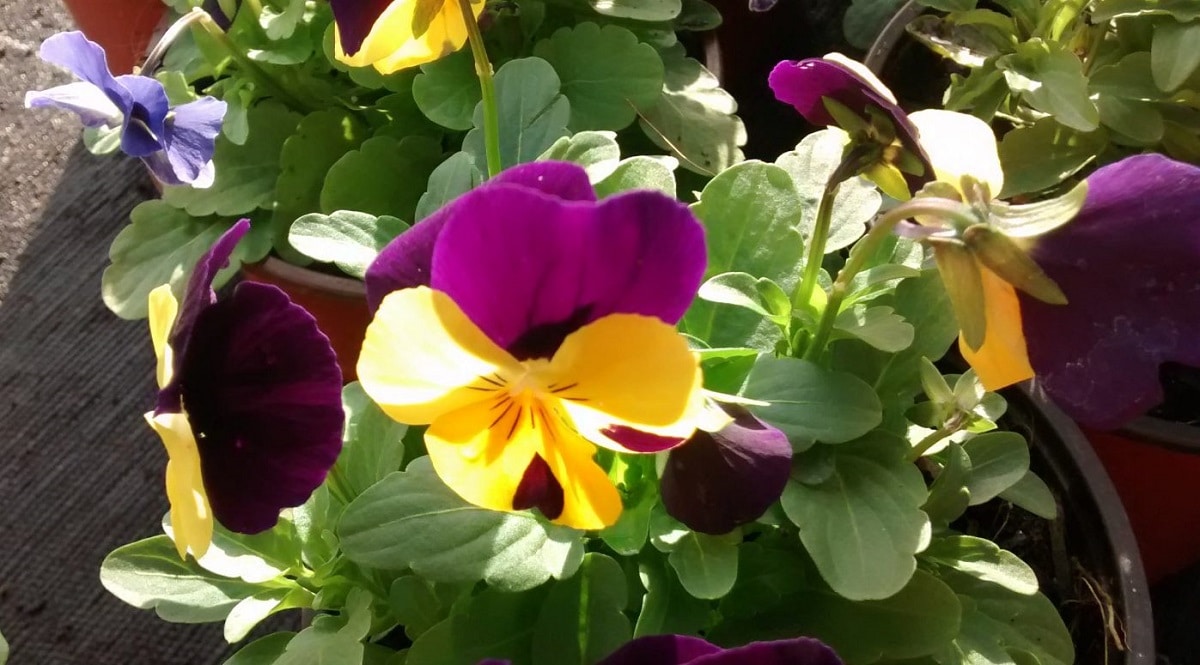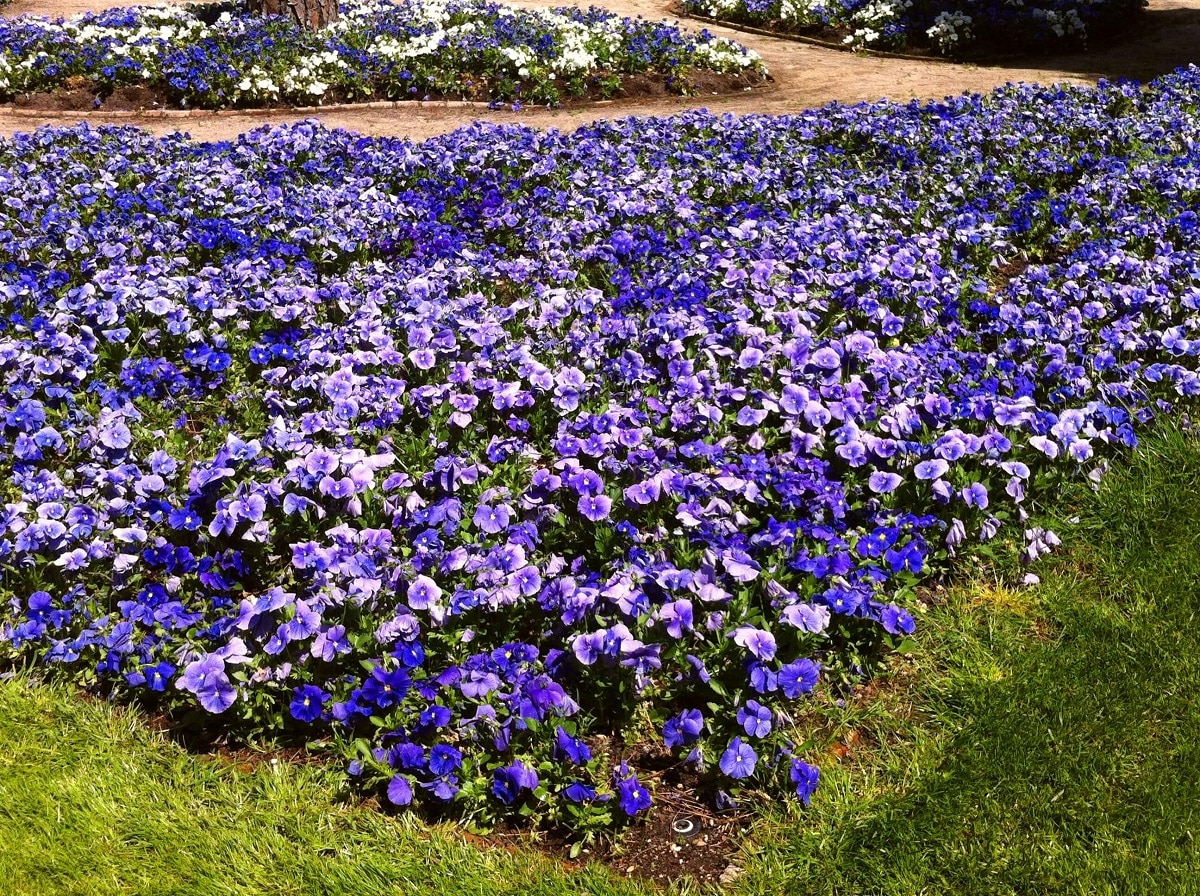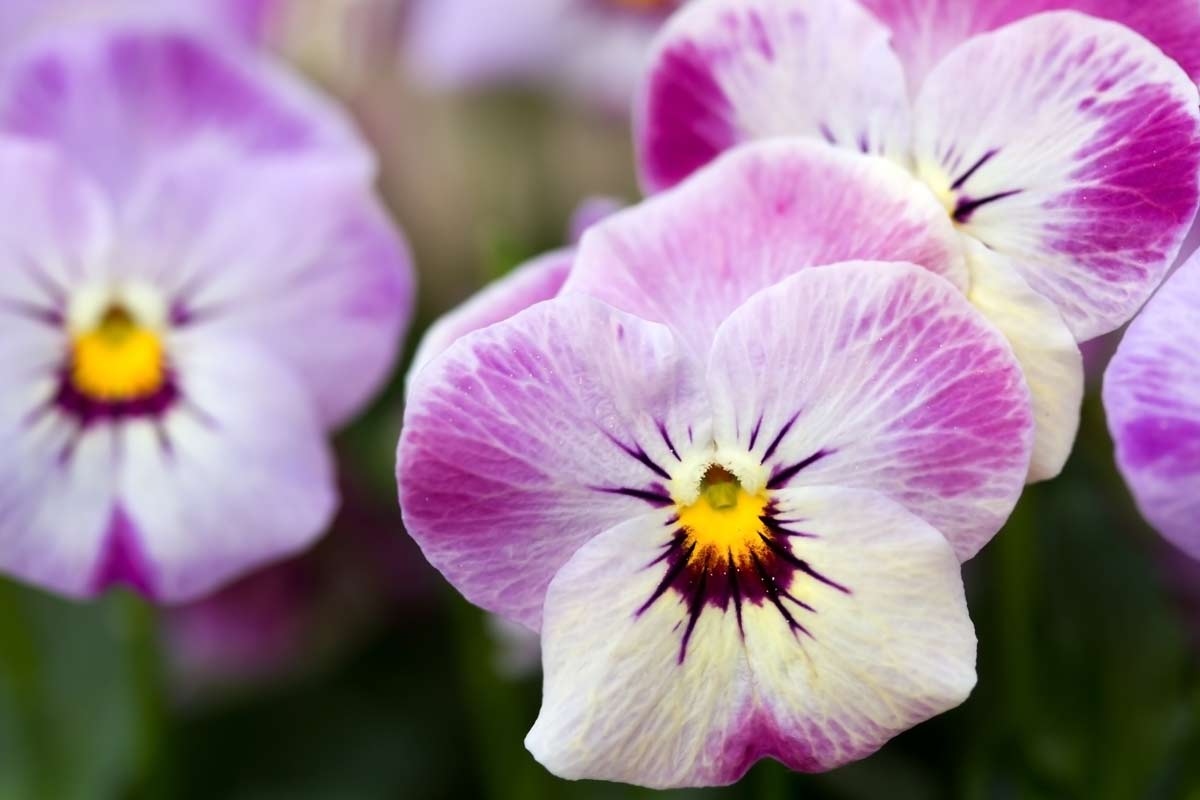
With the arrival of autumn in the Northern Hemisphere, the first seasonal Viola cornuta plants begin to appear. They are sisters to the popular Viola x wittrockiana, commonly known as pansies. It is very similar in appearance, although the plant is more compact, with smaller, more prolific flowers. It is usually a plant widely used for decorating both interiors and gardens. Many people wonder what are the viola cornuta care and if it is very vulnerable to inclement weather.
For this reason, we are going to dedicate this article to tell you about the main care of Viola cornuta, its characteristics and importance.
Key features

Its scientific name is Viola cornuta and it belongs to the Viola family. It is also known by names like violet, horned violet, and Pyrenean violet. It is native to the Mediterranean region of Europe and is considered endemic to the Spanish Pyrenees and the Cantabrian mountains. Curiously, It is included in the Red List of Threatened Species of Andorra.
Viola cornuta is a perennial plant with dark green leaves. Oblong to round, oval, with slender stems growing from the base of the plant. It can be between 10 and 25 cm in size as a plant.
Its flowers are much smaller than Viola x wittrockiana, and are fragrant, used in gourmet and edible garnishes. Violet flowers have a light aroma, and the taste is delicate and smooth to taste, which is suitable for eating with food.
The color of its flowers can be varied, since as an ornamental plant new varieties constantly appear, the color of the flowers being the greatest novelty. A timeless tonic, its flowers are bicolor, being the blue, dark purple and yellow the dominant colors in these combinations. Its flowering period is concentrated from September to early April in the northern hemisphere.
Violet is used as an ornamental potted plant in fall season plants. The most normal thing is to use them to create rockeries, flower beds and borders, although it is increasingly common to admire them alone or in groups on terraces, patios, balconies... or even at home as a small floral detail. In this case, it is advisable to place them as close as possible to a light source such as a window.
Detailed description of the Viola cornuta

The relevant characteristics of Viola cornuta plants are the following:
- It is a perennial plant, that is, it lives more than two years.
- It is part of an ideal plant for growing in pots and direct soil.
- In addition to its excellent aroma, its main attraction is the flowering it offers in winter.
- The leaves of the plant are usually oval.
- They prefer areas of the garden that have sun exposure.
- Its petals are not only used for decoration, but are also widely used in haute cuisine and confectionery. Because they are even edible and have a mild taste.
- Its flowers are generally bicolor.
- It is propagated by rhizomes.
- Its ideal climate is between cool and humid.
- The substrate in which it grows must be well drained., rich in organic matter and must remain moist.
- Its ideal pH is neutral to alkaline.
Its flowers are distinguished by their delicate aroma. It usually has dark purple, blue, cream or yellow hues. Bi-color shades are the most striking, in this case the flowers have a primary color combination of yellow, blue, and purple.
Typically, yellow is next to dark purple, blue is next to yellow, and yellow is next to lavender. It grows between 2 and 4 cm. Where its petals reach between 1,5 and 1,9 cm.
The leaves of the Viola cornuta plant originate at the base of the plant and are hairy on the back. On the other hand, they are rectangular in shape, which means they are longer than they are wide. They have a petiole, which corresponds to the appendage that joins the stem.
Viola cornuta care
The cultivation of purple viola is very simple, from the sowing of seeds at the end of summer. Its location in the garden will be in full sun and the soil must be rich in organic matter.
DIY gardeners often purchase packets of horticultural and ornamental seeds to grow. Knowing or having technical expertise in this area helps a lot. In this context, we present relevant technical data on the cultivation of Viola cornuta. These data should always be used as a guide, as it depends on the crop, substrate used, climate, etc. Results can vary widely.
As plants in the group of seasonal ornamentals and autumn plants, we plant them in pots with a diameter of about 10 cm after the seedlings have germinated. Once they have grown to a reasonable size, we can plant them directly in the garden.
The substrate indicated in this case is a universal substrate or substrate for outdoor plants with a pH between 5,8 and 6. The required Ec (substrate conductivity) must be between 1 and 1,5. The ideal temperatures are between 2 to 5ºC at night and 20 to 22ºC during the day. Below them, their development will slow down, above them, they will speed up, and in no case will their growth be ideal.
The exposure of the newly planted plants will be done in full sun, since the climate is not very hot at this time of the year when Viola is planted. The risk will be moderate, with frequent occurrences during the first week, keeping them at a distance during the rest of the crop to favor root development.
Fertilization can be done 4 or 5 weeks after planting with fertilizer 18-12-24 (mixed in irrigation water) at a dose of 1 gram per liter twice a week. The most common pests are aphids and caterpillars.
As for diseases, they are not very frequent, but in case of risk, Alternaria, Tielaviopsis and Cercospora are probably the most prone. In these conditions, violas take 8-12 weeks to grow from pruning (planted in pots) until ready for direct sowing in the garden.
Reproduction of the Viola cornuta

Viola cornuta is characterized by seed propagation, especially during the months called spring or summer. All you have to do is put them in a glass with water and after a few minutes, only sunken seeds will be removed.
They must then be placed on a substrate with a distance between them, which has previously been moistened and can be easily placed in pots or seedling trays. Subsequently, they are covered with more substrate, watered and placed in direct sun if it is spring, or in a shady place if it is summer. They usually germinate in less than two weeks. During this time, it is important to verify that the substrate is completely wet.
I hope that with this information you can learn more about the care of the viola cornuta.